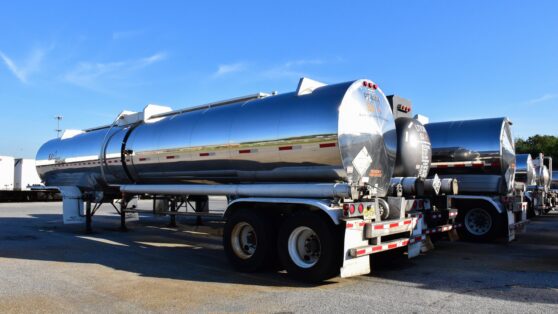Before GPS and telematics technology, managing a fleet was done almost blindly. Fleet managers who wanted to know a vehicle’s current location or whether it arrived on time had to rely on word of mouth. Then a decade ago all that changed.
Fleet telematics enabled managers to optimize vehicle routes, track driver behavior, and get location data in real-time. Today, the ability to track a vehicle and access detailed sensor data is at the core of fleet management services.
Recently, telematics systems have undergone a revolution with the addition of video technology. Video not only enables fleet managers to see what’s going on inside and outside the vehicle, video telematics also makes fleets a lot safer. A study of more than 10,000 crashes of buses and heavy trucks estimated that fleet video telematics reduce crashes by 35 percent. Let’s take a closer look at video telematics, what is a telematics system, and why fleets should adopt this cutting-edge technology.
What Is Video Telematics?
First let’s start with some basics: What is vehicle telematics? It’s technology that monitors and collects a wide range of data from a connected vehicle, like vehicle location (via GPS technology), engine diagnostics, fuel efficiency, odometer readings, speed, brake use, idling time, harsh acceleration, and impact. What is telematics used for? Typically, all this data is visualized on a software platform, which fleet operators use to manage their resources.
Video telematics combines video equipment with vehicle analytics to provide a more holistic view. Not only does it capture vehicle location and sensor data, it also records everything happening in and around a vehicle, including driver behavior, nearby vehicles, and the environment. Video is especially valuable because it provides context for driver actions and road events, as well as opportunities for training.
Components of Vehicle Telematics Solutions
How does telematics work? There are a range of telematics devices on the market which feature different functionality and benefits. However, today’s modern video telematics solutions typically share these basic components:
- Video cameras
- A front-facing camera mounted on the windshield or dashboard
- A rear-facing camera
- (Optional) An interior camera to record the driver and cabin; additional cameras around the vehicle for side views
- Telematics technology, which is either embedded in the primary camera or is standalone
- A wireless module within the camera or telematics device, which transmits video footage and data
- A software platform that processes and analyzes the data
- An end-user application
Notably, the video component of fleet management telematics solutions varies widely. Less advanced solutions feature limited front- and rear-views with manual control. These solutions often retain data on memory cards, which must be downloaded.
In comparison, advanced telematics solutions support multiple cameras inside and around the vehicle. These solutions are typically hardwired to ensure they’re tamper-proof. Their software tracks data and automatically initiates video capture for every road event. Video data is constantly uploaded via a wireless network to provide fleet managers with real-time alerts and two-way communication with their drivers.
Why Are Telematics Systems Important?
Perhaps the biggest reason fleet telematics devices are important is because they provide fleet managers with the ability to always see exactly what’s happening from the perspective of a driver in real-time. While the benefits of telematics system depends on its level of sophistication, here are four fundamental ways advanced video telematics systems help fleets maximize their potential:
- Lower operational expenses. Exonerate drivers and reduce the costs associated with collisions. Frequently, road accidents end up in protracted legal wrangling over claims. Video footage protects drivers from being unfairly blamed and saves fleets millions in legal fees, liability, and damage to their reputations.
- Safer drivers. Some commercial fleet telematics systems provide drivers with in-cab alerts when they engage in dangerous driving behaviors. These reminders foster better driving habits, prevent accidents, and reduce traffic violations. Videos can also be used in driver training programs.
- Better customer service. When dispatchers know the location of every vehicle, they can respond to traffic and road conditions and make fleet routing adjustments to keep deliveries on-schedule. Telematics also ensures customers know where their package is in real-time and video evidence allows for confirmation.
- Increased driver retention and engagement. Telematics systems are a valuable part of driver rewards programs when they’re based on objective measures, like consecutive collision-free days, number of safe miles driven, and extraordinary skills demonstrated to avoid accidents. Positive recognition not only contributes to better driver retention, it also promotes a strong culture of safety.
Solution Spotlight: How Netradyne Can Help
Netradyne has one of the most sophisticated fleet management solutions in the industry. Our Driveri vision-based safety solution uses advanced technologies in artificial intelligence (AI), machine learning, and edge computing to create a new safe driving standard for commercial vehicles. With the highest definition cameras on the market, Driveri offers clear visibility inside and around the vehicle, including side angles and details such as license plates.
Capturing and analyzing 100 percent of drive time removes the guess-work for fleet managers by revealing the true cause of driving events. Driveri’s DriverSTAR system also enables a unique rewards program based on a driver’s individual GreenZone® Score.
Final Thoughts
So, what is vehicle telematics technology? It includes everything from GPS to vehicle sensors, wireless technology, and software. The addition of video to telematics provides increased visibility for fleet managers, which helps to lower operational costs, increase safety, and improve driver retention.
Not all fleet solutions are created equal. In order to make the most out of video telematics intelligence available, you need a sophisticated solution that’s right for your business. Learn more about Netradyne’s advanced Driveri solution.
Read The Ultimate Guide to Fleet Management to continue learning.







